Refik Anadol: Echoes of the Earth: Living Archive
Refik Anadol, Artificial Realities: Coral, 2023. Courtesy Refik Anadol Studios
Serpentine is thrilled to present Echoes of the Earth: Living Archive, an exhibition of new and recent works by internationally renowned artist, technologist, and pioneer in artificial intelligence arts, Refik Anadol.. Anadol, a pioneer in AI Arts presented his largest institutional solo exhibition in the UK, featuring new and recent works which opened on February 16th and will end on April 7th 2024.
Known for his digital works and large-scale public installations that present real-time generative environments, Anadol’s collaborative creative process with AI plays on human perception. Echoes of the Earth: Living Archive presents years-long experimentation with visual data of underwater landscapes and rainforests.
Refik Anadol, Artificial Realities: Coral, 2023. Courtesy Refik Anadol Studios
The exhibition features Artificial Realities: Coral (2023), an immersive installation enveloping viewers in an AI's imagination of underwater landscapes. For this artwork, Refik Anadol Studio trained a unique AI model with approximately 135 million images of corals openly accessible online. Generating abstracted coral images, the AI constructs new visuals and colour combinations based on the dataset.
Anadol’s solo exhibition also features the UK premiere of Living Archive: Large NatureModel a new site-specific installation which was first introduced at the World Economic Forum 2024 in Davos, Switzerland. At Serpentine North, the installation transforms the gallery into the AI model’s interpretation of a rainforest. It is the first installation in a growing body of work that is created employing The Large Nature Model, the world’s first open- source generative AI model dedicated to nature. For this ongoing research, the artist worked with the data of major institutions, including the Smithsonian Institution and London’s Natural History Museum. As additional data partners, such as universities, museums, foundations, government entities and libraries join the effort, the model, centred around archival images of fauna, flora and fungi, will expand over the coming years.
Refik Anadol said: “I am thrilled to bring our Studio's most ambitious AI Art projects to date to Serpentine this year. A ground-breaking initiative that we call the Large Nature Model, developed by our Studio, stands as the world’s first open-source, generative AI multimodal focused on nature, trained on an extensive and ethically sourced dataset of the natural world. Echoes of the Earth: Living Archive displays multisensory artworks derived from this model, featuring visuals and sound. Collaborating on such a significant project with my long-time mentor, Hans Ulrich Obrist, with whom I've shared many stages discussing the future of AI art, is an immense privilege.”
Refik Anadol, Echoes of the Earth: Living Archive, 2024. Installation view, Serpentine North. Photo: Hugo Glendinning. Courtesy Refik Anadol Studio and Serpentine.
Bettina Korek, CEO, and Hans Ulrich Obrist, Artistic Director, Serpentine, said: “Refik Anadol brings art, science and technology together to create generative, immersive environments that fascinate, educate and enchant audiences. This show kicks off a year of research and projects by the Serpentine Arts Technologies department focused on AI, and we could not be more pleased than to collaborate with him.”
Taking the data that surrounds us as primary material, and using a neural network, amethod of AI that is inspired by the human brain, as a collaborator, Anadol creates compelling visualisations of our digitised memories and expands the possibilities of interdisciplinary arts. His work explores the meaning of humanity in the era of artificial intelligence as well as the challenges that ubiquitous computing has brought forth. He investigates the profound ways in which the dominance of technology in our daily lives alters our perception and experience of time and space.
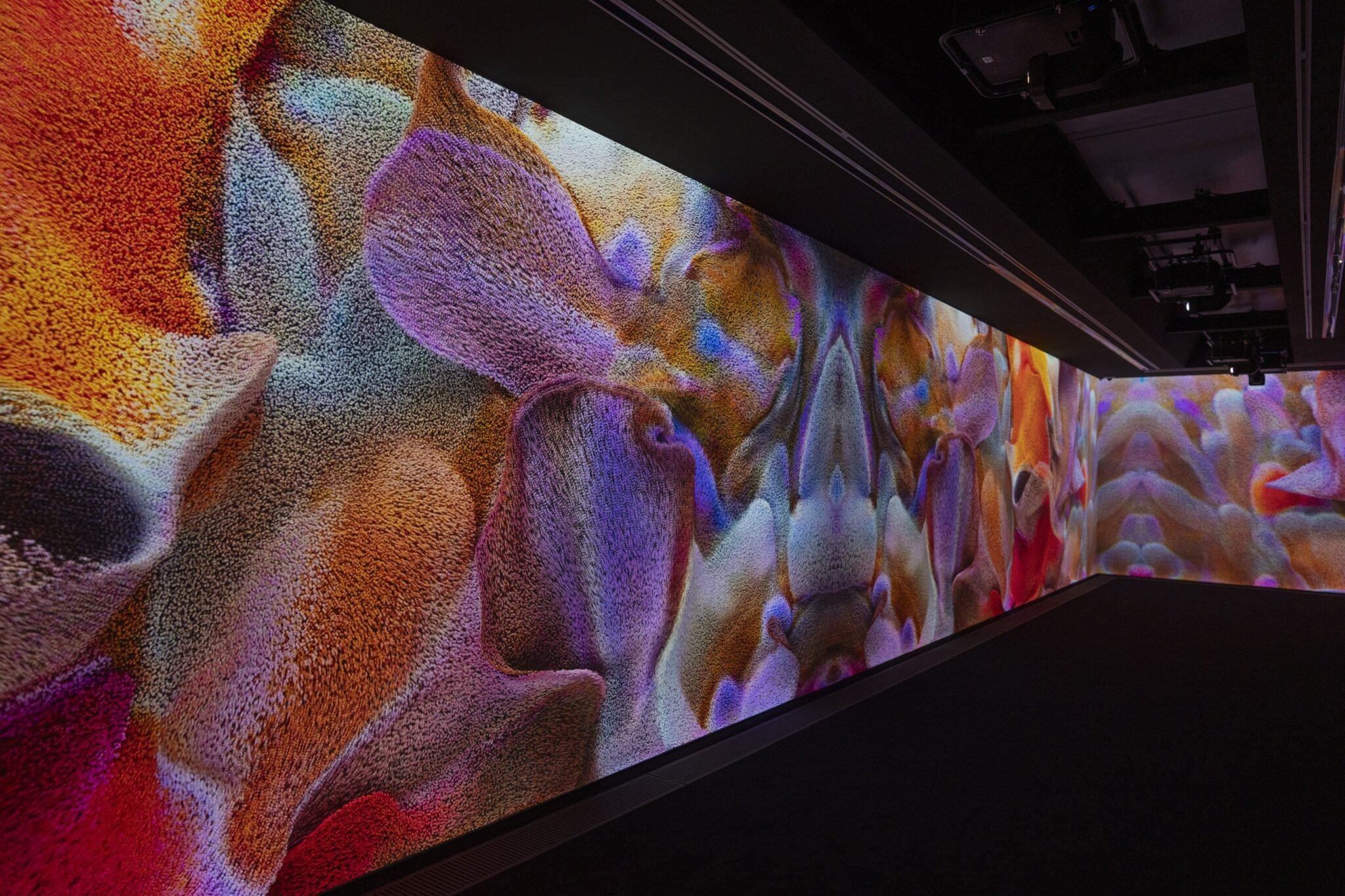
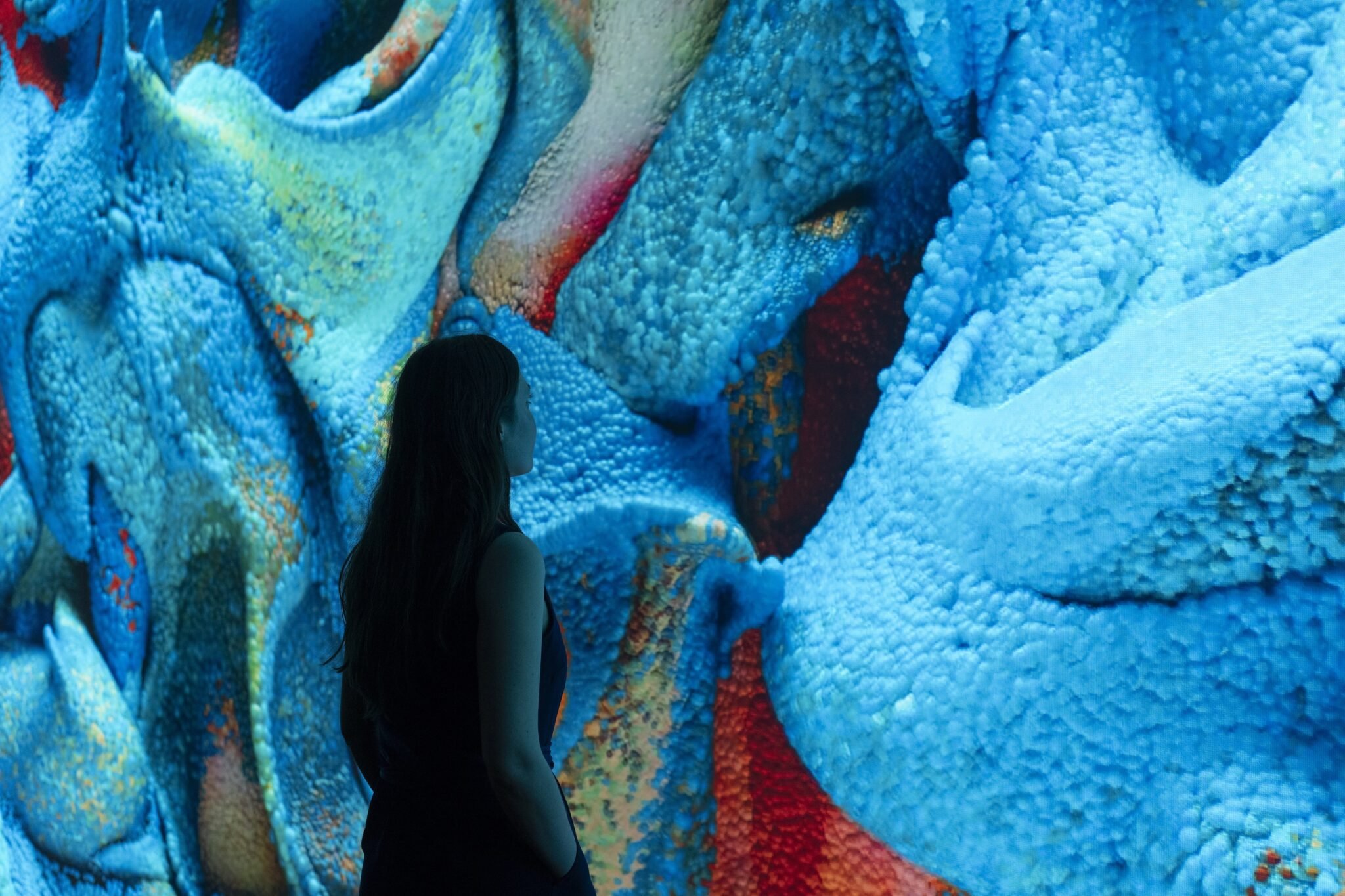
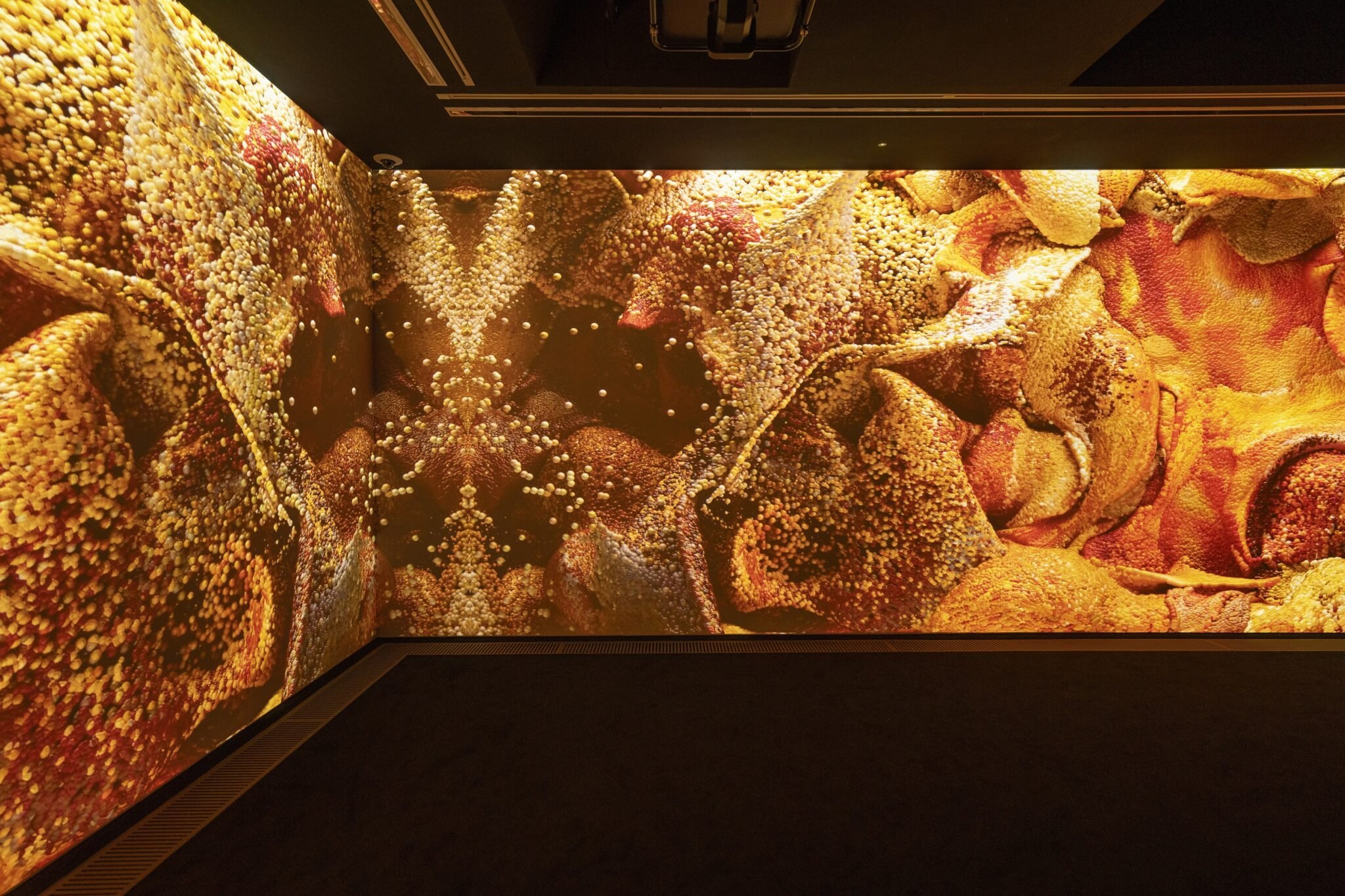
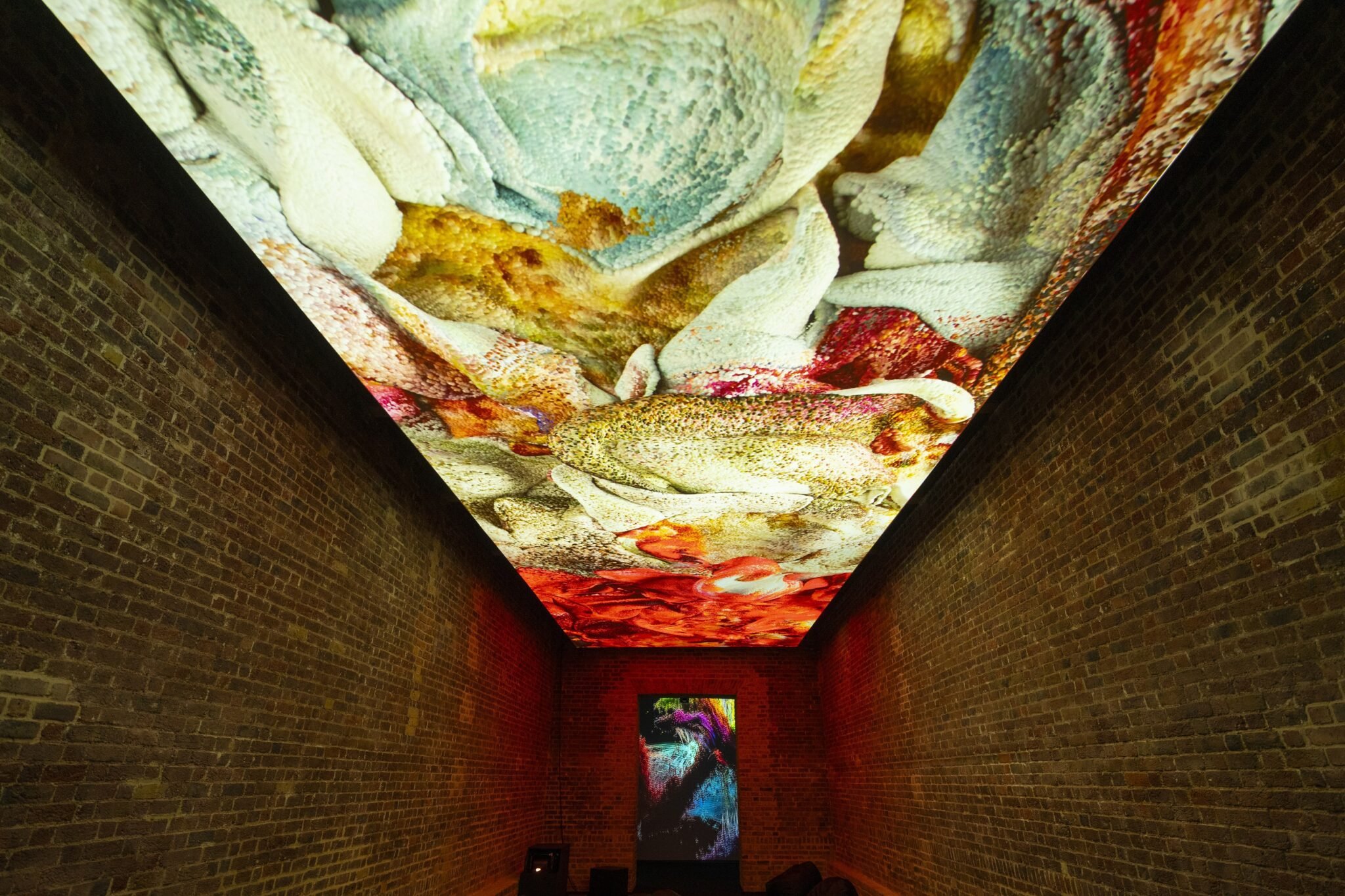
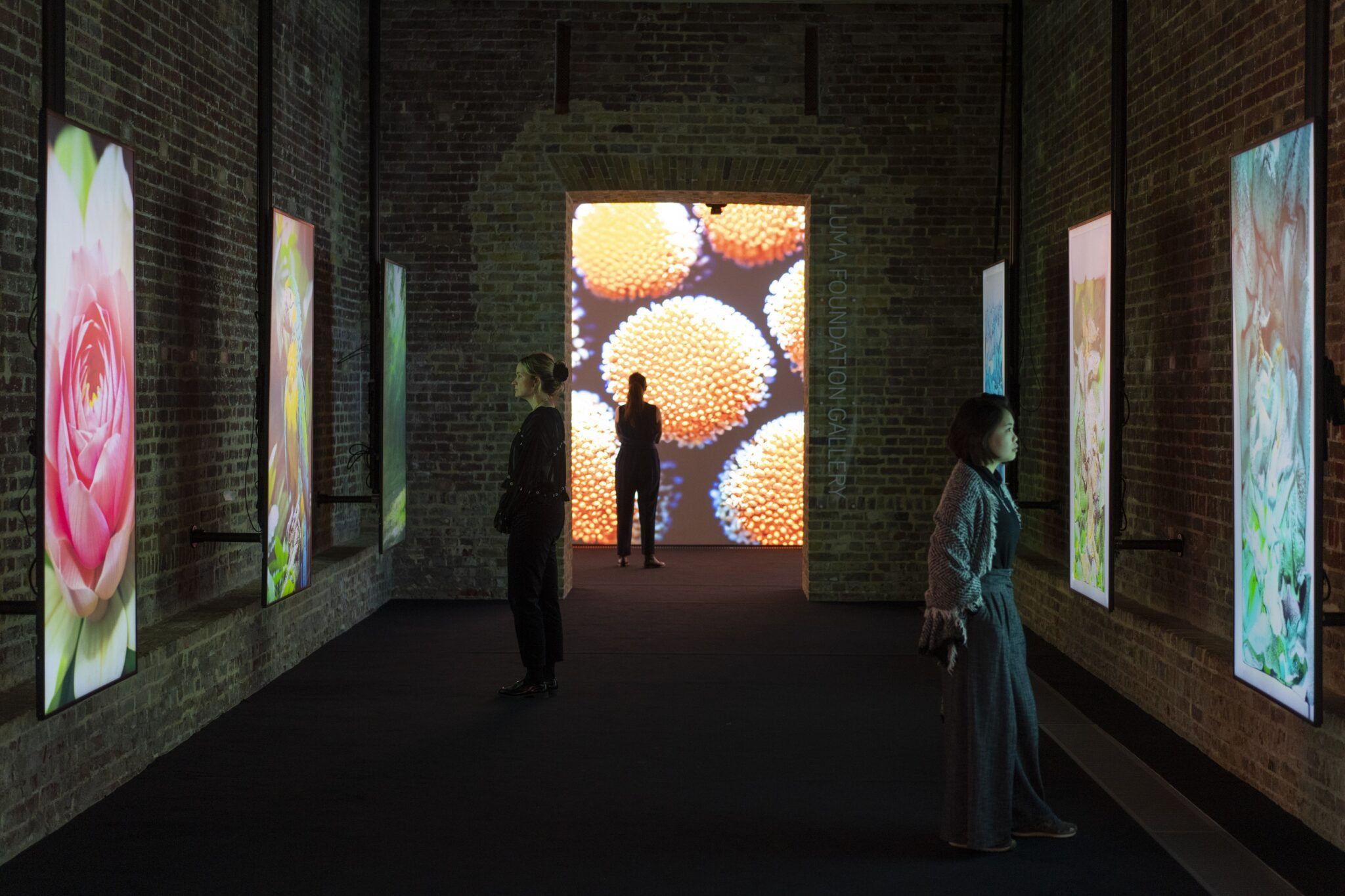

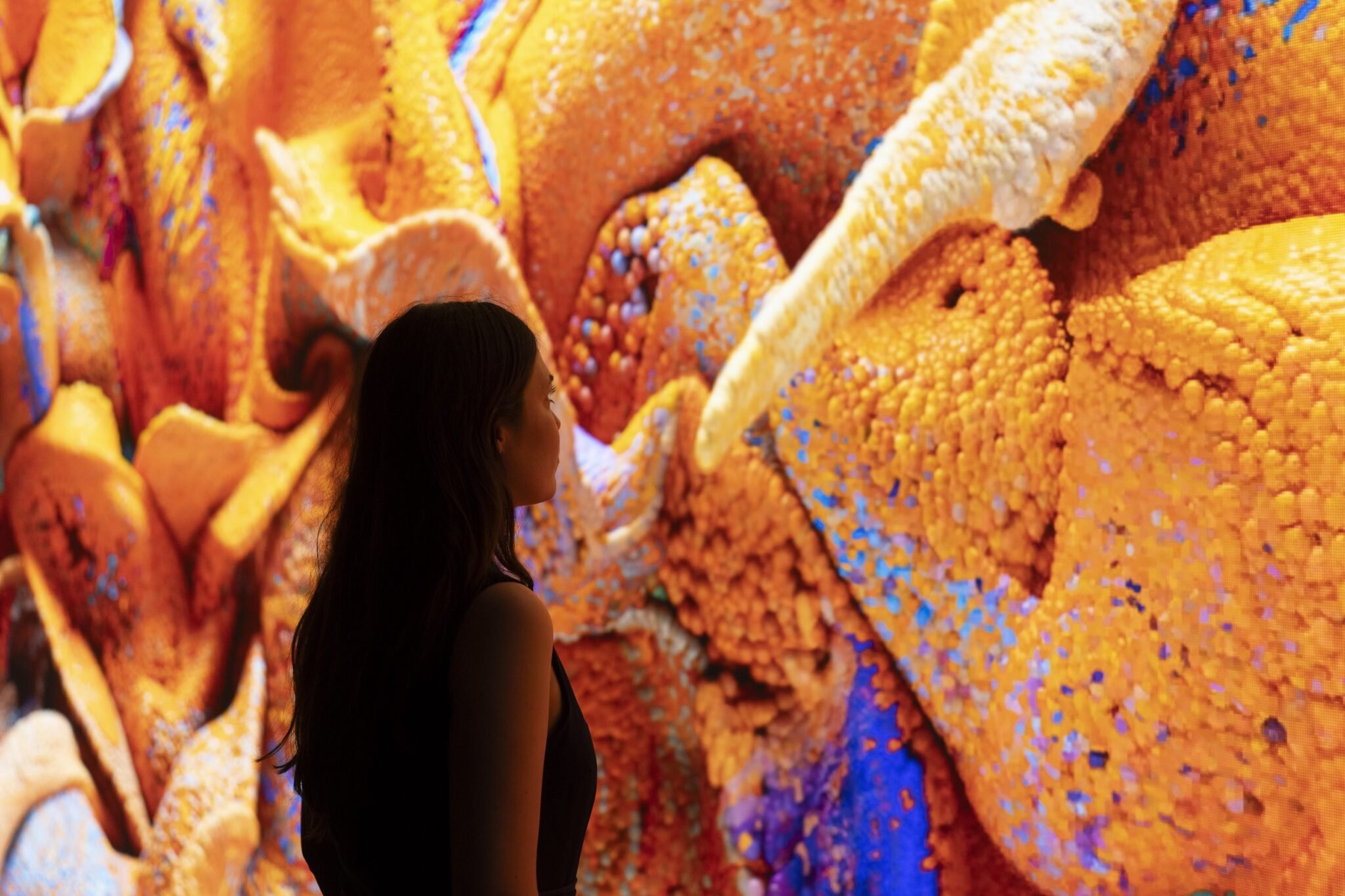
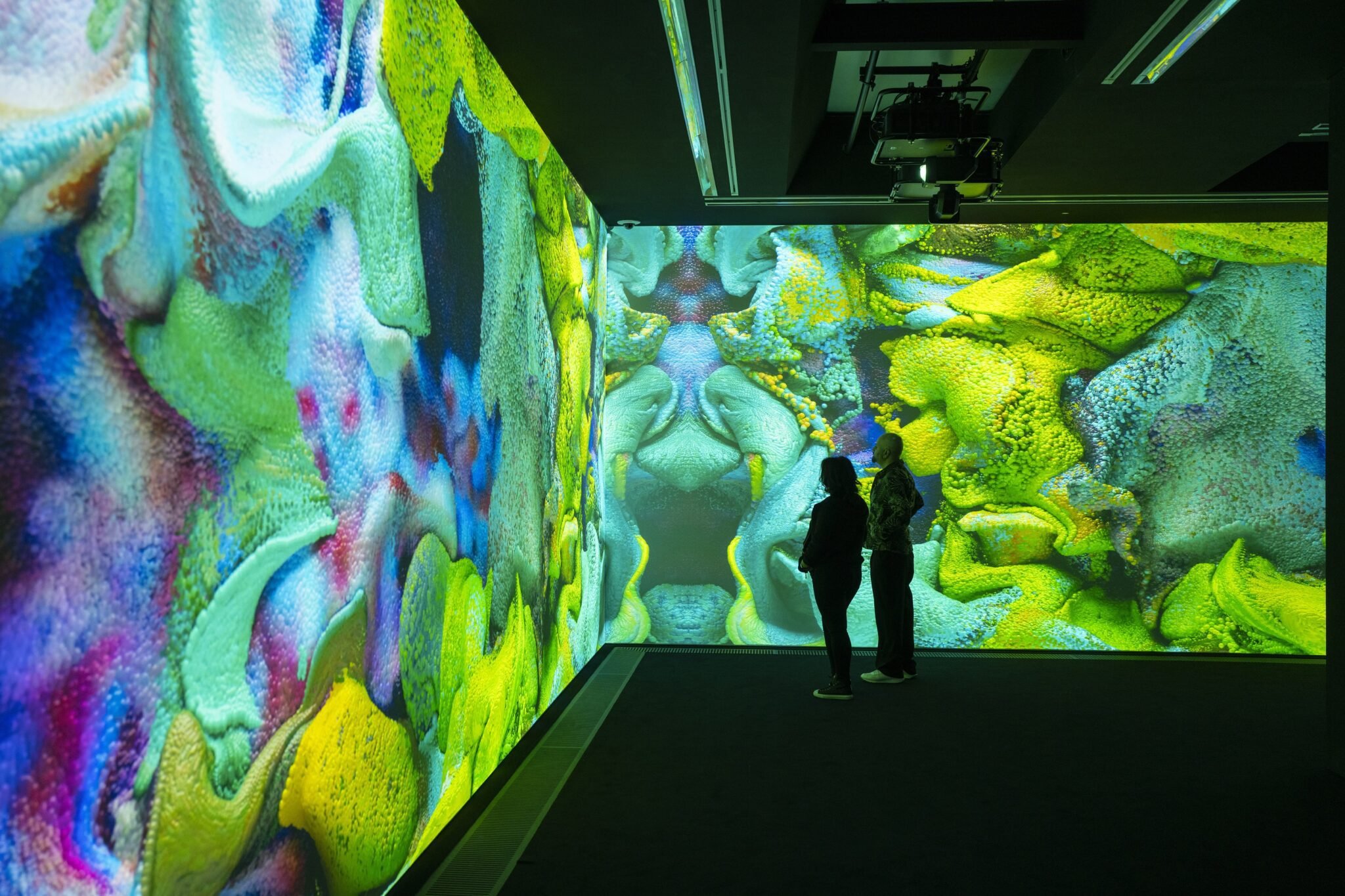
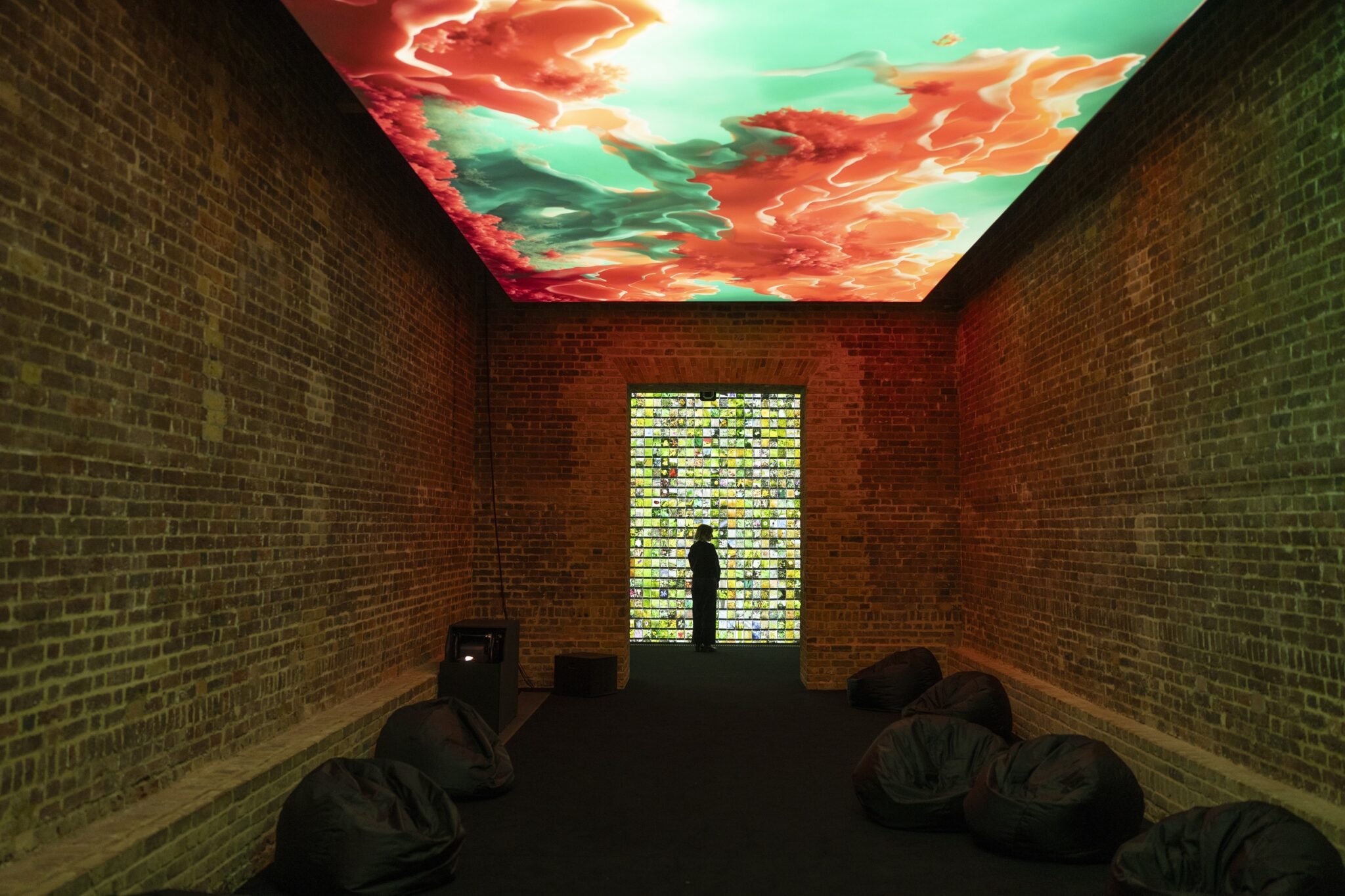
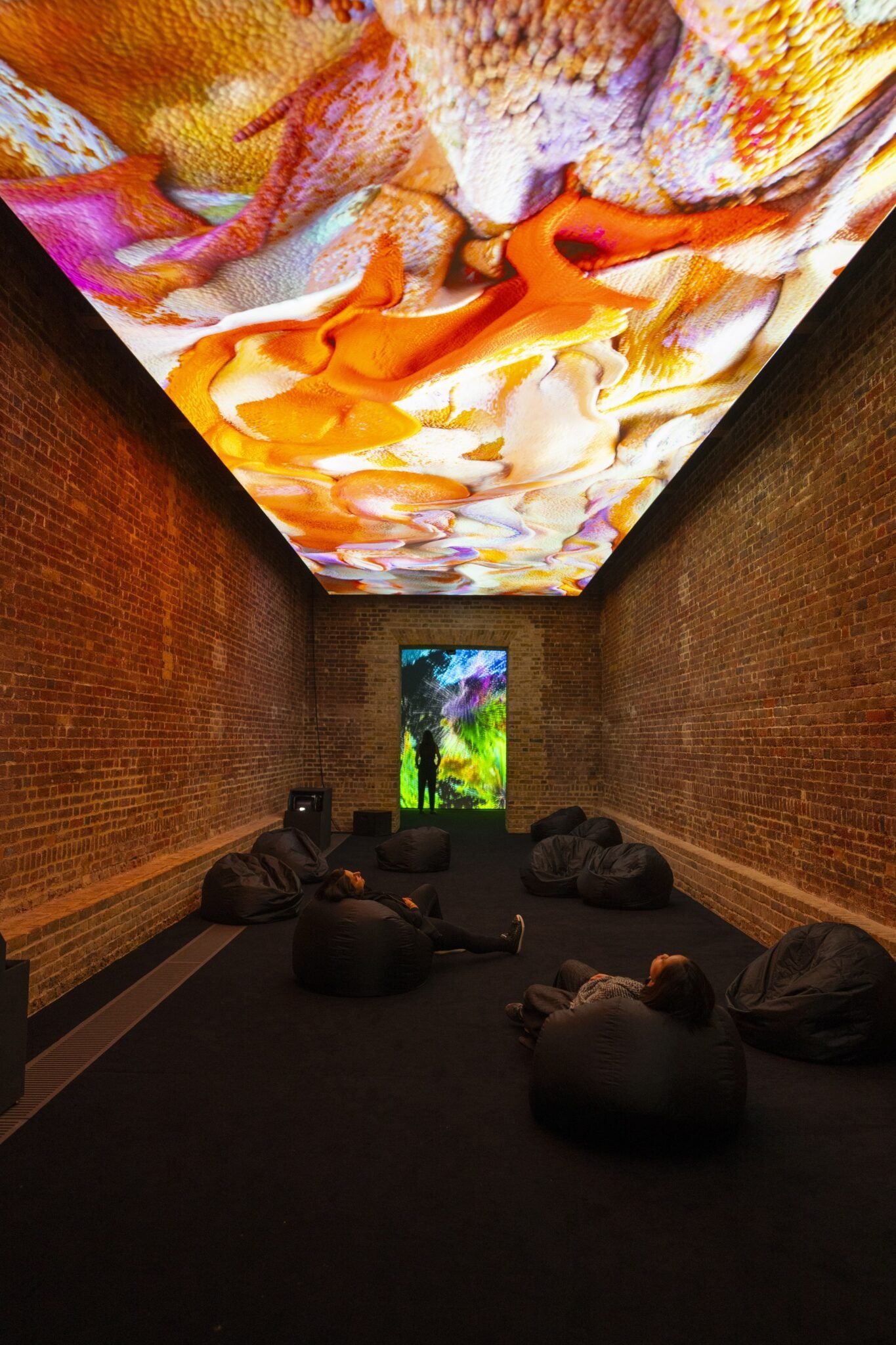
Refik Anadol, Echoes of the Earth: Living Archive, 2024. Installation view, Serpentine North. Photo: Hugo Glendinning. Courtesy Refik Anadol Studio and Serpentine.
The exhibition is part of the New Alliances strand of the Serpentine programme which aims to widen audiences through engagement and collaborations. Echoes of the Earth: Living Archive is presented in collaboration with 1OF1, led by patron and philanthropist Ryan Zurrer, which partners with forward thinking artists and institutions by contextualising and supporting art of the digital age.
Since 2014, Serpentine has developed AI projects with Cécile B. Evans, James Bridle, Jenna Sutela, Ian Cheng, Pierre Huyghe and Hito Steyerl that have prefigured subsequent technological developments in the field. The establishment of Creative AI Lab in collaboration with King's College London in 2019 offered a space for research into AI systems from artistic and cultural perspectives and interests, generating a solid foundation for thought leadership on this topic as AI gains increasing mainstream attention in 2024 which will also see Serpentine Arts Technologies develop a new AI project with Holly Herndon and Mat Dryhurst later in the year.
Echoes of the Earth: Living Archive is curated by Claude Adjil, Curator at Large, with Liz Stumpf, Assistant Curator and produced by Brittany Stewart, Creative Producer and Halime Özdemir, Production Manager.
Refik Anadol by Efsun Erkilic
About Refik Anadol
Refik Anadol (b. 1985, Istanbul, Turkey) established Refik Anadol Studio in Los Angeles, USA, in 2014. The Studio’s research practice centres around discovering and developing trailblazing approaches to data narratives. Anadol also teaches at UCLA’s Department of Design Media Arts from which he obtained his Master of Fine Arts.
By proposing the possibility of “post-digital architecture,” Anadol invites his audience to imagine alternative realities by redefining the functionalities of both interior and exterior architectural elements. He tackles this by moving beyond the integration of media into built forms and translating the logic of a new media technology into art and design. His works are included in the permanent collections of the Museum of Modern Art, New York; Istanbul Museum of Modern Art; and the National Gallery of Victoria, Melbourne. Anadol has participated in Venice’s Architecture Biennial (2021); NGV Triennial in Melbourne (2020); Ars Electronica Linz (2017); and Istanbul Biennial (2015). His works have widely been presented internationally, including recent exhibitions at Kunsthal Rotterdam (2023); Arken Museum of Modern Art (2023); ArtScience Museum, Singapore (2023); Kunstpalast, Düsseldorf (2023); Espoo Museum of Modern Art (2022-23); Centre Pompidou-Metz (2022); Hammer Museum, Los Angeles (2022); and Pinakothek der Moderne, Munich (2022). Refik Anadol’s global projects have received a number of awards and prizes including the Lorenzo il Magnifico Lifetime Achievement Award for New Media Art, Microsoft Research’s Best Vision Award, iF Gold Award, D&AD Pencil Award, German Design Award, UCLA Art+Architecture Moss Award, Columbia University’s Breakthrough in Storytelling Award, University of California Institute for Research in the Arts Award, SEGD Global Design Award, and Google’s Artists and Machine Intelligence Artist Residency Award. A pioneer in his field, and the first to use artificial intelligence in a public artwork, Anadol has partnered with teams at Microsoft, Google, NVIDIA, Panasonic, NASA/JPL, Intel, IBM, Siemens, Epson, MIT, UCLA, Harvard University, Imperial College, Stanford University, and UCSF, to apply the latest, cutting-edge science, research and technologies to his work. Living Architecture: Casa Batlló, inspired by Antoni Gaudí’s building in Barcelona, Spain is one of Anadol’s most significant public art projects. The piece was displayed on a large media screen in New York’s iconic Rockefeller Plaza with a simultaneous live projection mapping performance on the actual facade of Casa Batlló which was viewed by a crowd of nearly 50,000 people.
About Serpentine
Building new connections between artists and society, Serpentine presents pioneering contemporary art exhibitions and cultural events with a legacy that stretches back over half a century, from a wide range of emerging practitioners to the most internationally recognised artists, writers, scientists, thinkers, and cultural thought leaders of our time. Based in London’s Kensington Gardens, across two sites, Serpentine North and Serpentine South, Serpentine features a year-round, free programme of exhibitions, architectural showcases, education, live events and technological activations, in the park and beyond the gallery walls.
The Serpentine Pavilion is a yearly pioneering commission, which began in 2000 with Dame Zaha Hadid. It features the first UK structures by some of the biggest names in international architecture.
Public art has emerged as a central strand of Serpentine’s programme. Major presentations include a collection of Eduardo Paolozzi’s sculptures (1987), Anish Kapoor’s Turning the World Upside Down (2010), Lee Ufan’s Relatum – Stage (2018-19), Christo and Jeanne-Claude’s London Mastaba in the Serpentine Lake (2018), I LOVE YOU EARTH by Yoko Ono (2021), Dominique Gonzalez-Foerster’s In remembrance of the coming alien (Alienor), (2022), and Alexandra Daisy Ginsberg’s Pollinator Pathmaker (2022 - ongoing).
Proud to maintain free access for all visitors, thanks to its unique location, Serpentine also reaches an exceptionally broad audience and maintains a profound connection with its local community.
Serpentine Arts Technologies programme explores the impact of technology through art, research and experimental projects. It supports artists to produce projects that use advanced technologies and convenes people working in art, technology, law, policy, and academia to share knowledge and develop new ideas about technology and society.
The foundation of Serpentine Arts Technologies’ programme is in an evolving R&D Platform that nurtures innovation for future art ecologies by securing a crucial institutional space for pragmatic interventions and necessary risk-taking at the intersection of art, science and technology. This is achieved through dedicated research labs (Blockchain Lab, Creative AI Lab, Legal Lab, Synthetic Ecologies Lab), orientation and knowledge-sharing with the wider sector through Future Art Ecosystems, and co- facilitation of a national Creative R&D Working Group.
For more information about this exhibition and others, please visit Serpentine’s website. Please also visit and follow Serpentine on Instagram, Facebook, and YouTube, along with TikTok.



